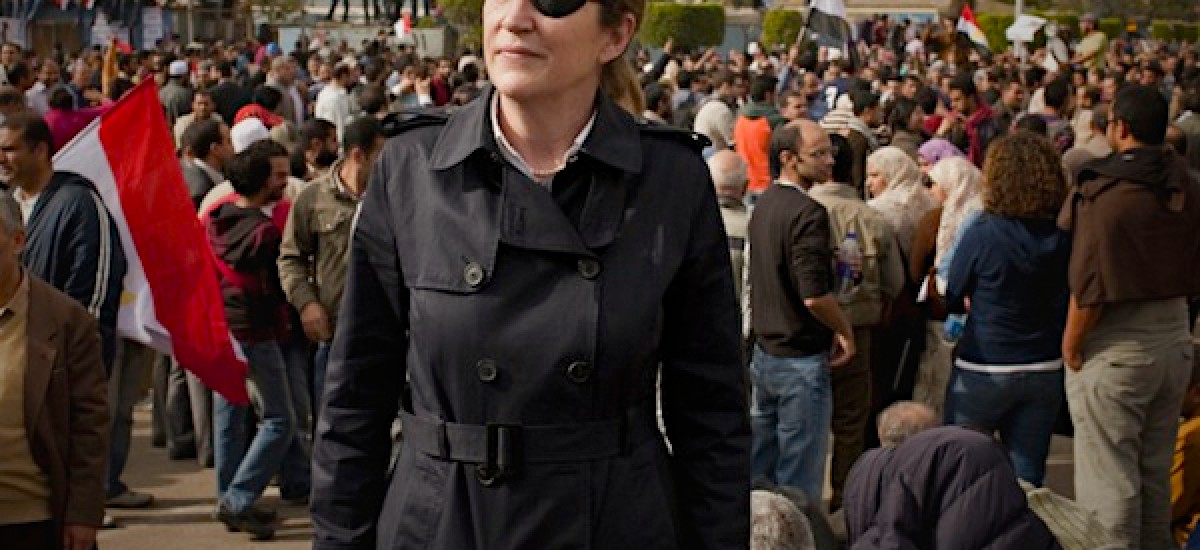Photo via CBS News and courtesy AP Photo/Ivor Prickett Sunday Times
“Journalists covering combat shoulder great responsibilities and face difficult choices. Sometimes they pay the ultimate price.” – Marie Colvin
A few days ago, I was in a conversation with a fellow journalist and a human rights activist with regard to establishing an initiative in response to the unfolding developments in Sri Lanka. We discussed which journalists, experts and academics we could call to help us in our struggle. A name that immediately came up was Marie Colvin. While taking a reflective walk after the discussion, I decided to contact Marie Colvin through another foreign journalist, and I even decided to speed up my postponed trip to the UK. I went online in the morning to book the ticket, but just before I booked the ticket, I checked the news and I could not believe what I was reading – Marie Colvin had been killed in Syria, along with French photographer Remi Olchlik.
I never had the privilege of meeting Colvin in person, but she was the first Western journalist that I highly respected due to the calibre of her work and outstanding courage. It was in 2001 – eight months before I began my life as a journalist – that I heard about her. Her black eye patch was her badge of honour. Exactly ten years ago [22 Feb 2002], a Ceasefire Agreement (CFA) was signed between the Government of Sri Lanka [GSL] and the Liberation Tigers of Tamil Eelam [LTTE]. It led me to go back to my nation and see my parents after an absence of five years. Marie Colvin was also trying to contribute to creating a peaceful situation between the nations on the island of Sri Lanka.
Since the bloody war came to an end in Sri Lanka in May 2009, she began to play a crucial role in the pursuit of truth and justice. This role was at the core of her journalism. In the early hours before the war came to an end, she tried – to the best of her ability and with what available avenues were left – to save at least a few lives.[1] She valued lives irrespective of whether they were combatants or non-combatants. Her last report from Syria expressed her unbearable pain at the death of a little baby. The day before her death, Colvin reported about the shelling of a city in a video for the BBC, as well as for CNN, in which she described the bloodshed as “absolutely sickening.” “I watched a little baby die today,” the award-winning reporter said, and it was “absolutely horrific.”[2]
In addition to exposing human tragedies, she drew the world’s attention to the real face of brutal regimes, including in Sri Lanka and finally Syria. It is noteworthy that I went for my first media assignment to the Vanni in April 2002, where the LTTE leader publicly addressed local and international journalists. Two days prior to the press conference, I went with several foreign and Sinhala journalists to a few other places for additional news coverage, including getting the people’s views on the CFA and their lives in Vanni. On that occasion, I played a dual role: I was a journalist and interpreter for Sinhala and international journalists and I was helping the journalists in Visvamadu in the Mullaiththeevu district. During that time, a foreign journalist asked me to help him interview a small business owner. I agreed and talked to the interviewee and informed him that the foreign journalist would like to interview him. The owner agreed with a smile, before pausing to ask a question: “does he know Marie Colvin”?
Since I heard about the tragic death of Marie Colvin, I have had a series of conversations with journalists, activists and INGO workers. All of them are deeply saddened by her death. An example of her commitment to her profession was the role that she played in East Timor. An article by the Telegraph captures Colvin’s intrepidity,
“In East Timor in 1999, for example, as Indonesian troops closed in on a United Nations compound in Dili where 1,500 people had taken shelter, the UN wanted to pull out and leave the refugees to their fate. Marie Colvin and two other female journalists remained in place, defying the UN, and the world, to do nothing. Eventually, shamed by the courage of the reporters, Indonesian forces allowed the refugees to leave and the international community stepped in. Marie Colvin’s presence undoubtedly helped save many hundreds of lives.”[3]
In my opinion, Marie Colvin was not only a journalist, but a peace maker, committed to finding truth and eventually bringing about justice through her reporting. She was committed to a way of life that was informed by her ideals.
She died for a cause that matters to all of us today.
[1] She nearly died in Sri Lanka in 2001, when she lost an eye: eight years later she was the first to report on the apparent murder of the last surviving Tamil Tigers despite their attempt to surrender. [The Guardian Editorial, 22-02-2012]


